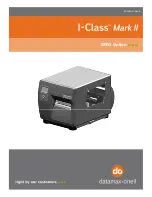
HCT User Guide
page 30
Copyright © 2001 HutchColor, LLC
User_Guide_43.docx 2/10/19
Note that good scanner profiles are a compromise between precision and smoothness. If a profile
reproduces all target patches perfectly, the profile may be favoring precision at the expense of
smoothness, and may cause contouring, color reversals or other anomalies in live work.
Causes of error
Profile errors may be due to numerous factors including, but not limited to;
•
Using the wrong reference file
•
Incorrect cropping
•
Uneven scan illumination or balance across the target (especially with digital cameras.)
•
Non-linearity of the scanner response curve
•
‘Crossed’ RGB curves or clipping or plugging in one or more of the scanner’s RGB curves
•
Inappropriate scanner response curve (too dark, too light or wrong curve shape)
•
Matrix or 3-D color processing in the scanner software prior to making the profile
•
Optical flare in the scanner or camera system
•
Color changes in the target caused by fading, staining or mishandling
Extreme gamut test
Good profiling software should reproduce RGB values outside the gamut of the target scan
reasonably well, so that originals with higher contrast or saturation than the target will be handled
correctly. To test extreme gamut compression, assign the scanner profile to the RGBXPLORER
image available free at
www.hutchcolor.com/targetsandimages.html
.
A bad profile may show sudden hue or lightness changes in one or more slices. A good profile will
reproduce each slice smoothly, with no sudden hue or lightness changes.
Bad gamut compression Good gamut compression









































